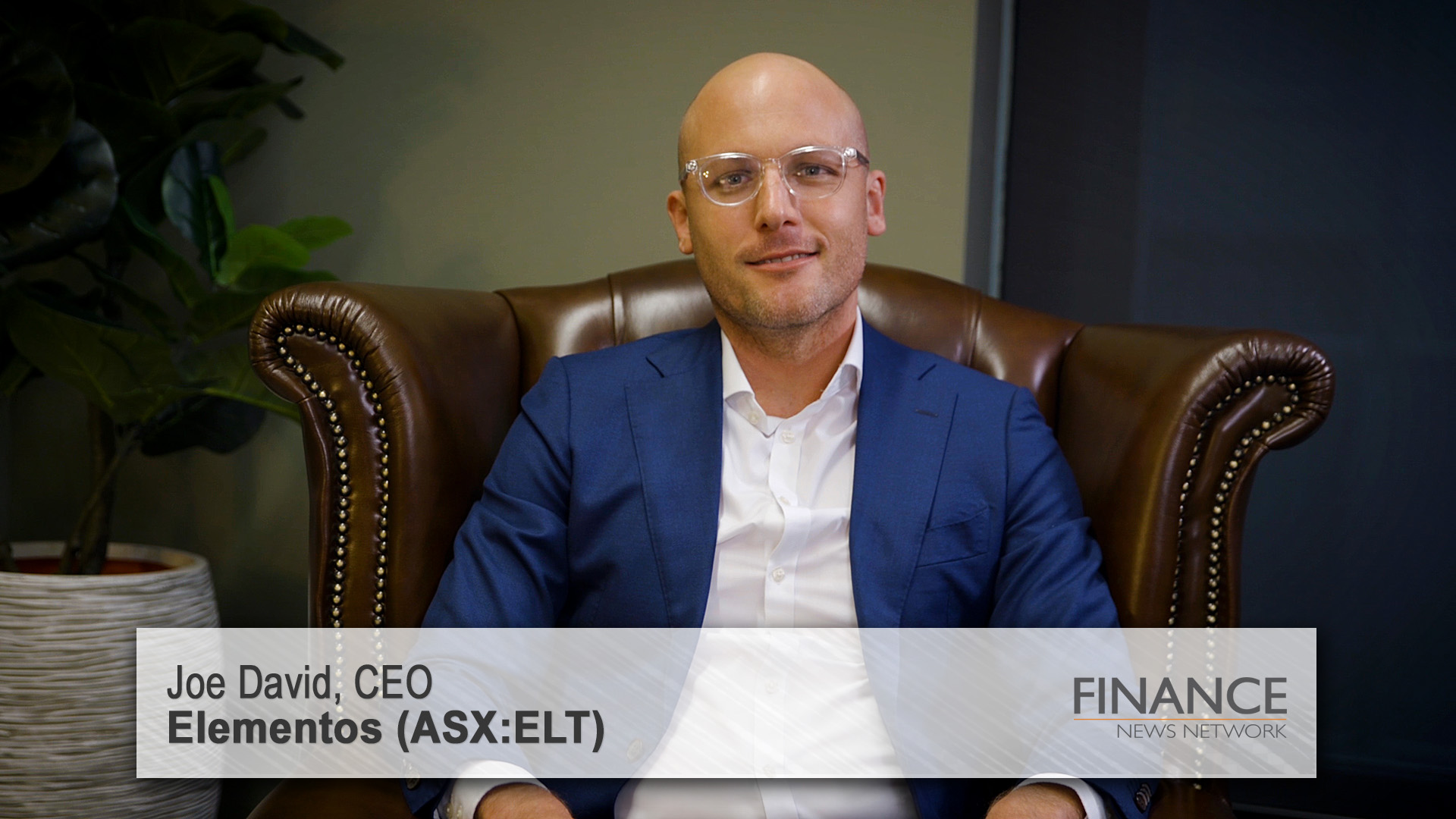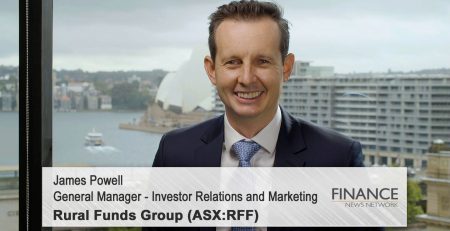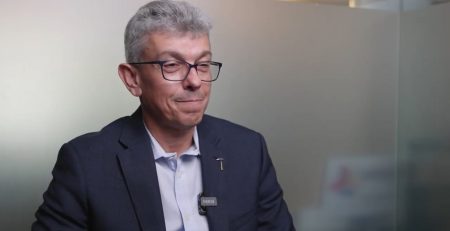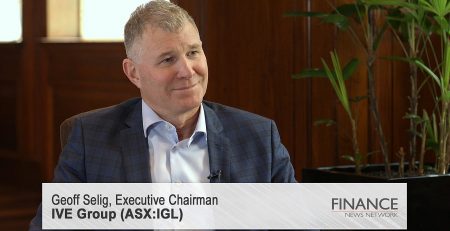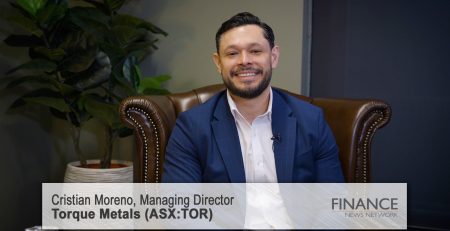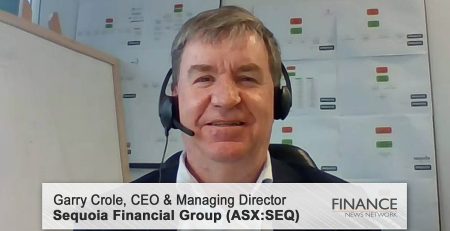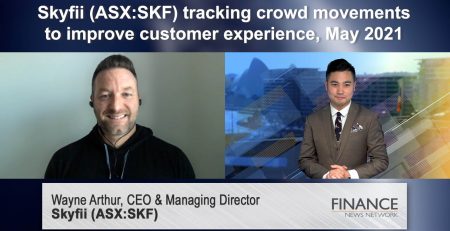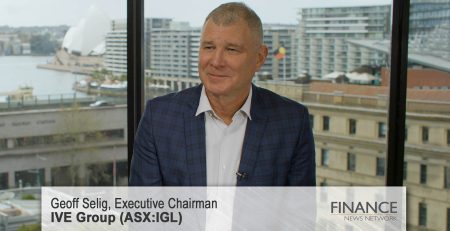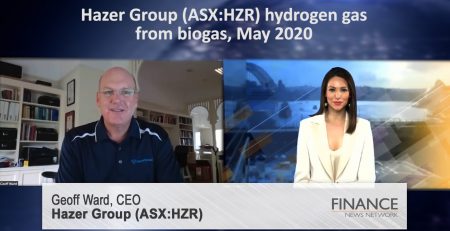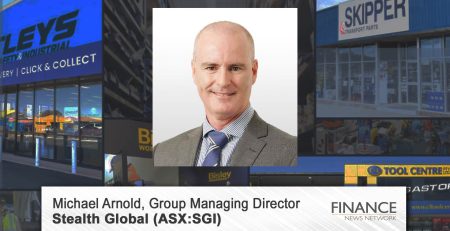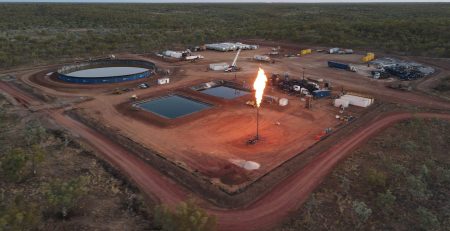Tapping into Tin: Elementos’ mining ventures with CEO Joe David
Paul Sanger: I am Paul Sanger for the Finance News Network and today we're talking with Elementos. Elementos, trading under the ASX code, ELT, with a market capitalization of approximately 35 million. Elementos is currently developing two tin projects with large minerals ore spaces and significant exploration potential in mining friendly jurisdictions. The company has its flagship asset in Andalusia, Spain, which is in the middle of a Spanish regulatory approvals and significantly progressed with its DFS. Today we're pleased to have Elementos MD Joe David with us. Welcome back, Joe.
Joe David: Thanks, Paul. Great to be here again.
Paul Sanger: Good to have you here. So let's delve into the tin market, which often flies under the radar, and recently tin prices have started to see a pretty decent uptick. What factors are contributing to this surge in prices in tin?
Joe David: How long do you have Paul? Because if you're going to start talking tin, I can talk for quite a long time.
Paul Sanger: As long as you want, Joe.
Joe David: So hey, there's a couple of major factors. Firstly, tin does fly under the radar. A couple of key things for that. While it's been mined for 5,000 years, the tin and copper come together to form bronze, and the Bronze Age revolutionized human society. Tin's been mined in Europe in various places for over 5,000 years. So tin is a critical mineral, one of the original critical minerals, but its market size, it's only about 2% the size of the copper market.
So it's one of the reasons why it doesn't get talked about as much, but effectively we're on the same thematic as the copper story. So for any of your followers that are following copper stocks, like myself, I'm a big fan and big believer in where copper is going, tin pretty much runs on the same demand thematic, at least. It's totally driven by the electrification story. So tin's main use, over 50% of the offtake of all tin globally is used in electrical solders. So effective electrical solder is the glue that connects electrical circuits together and tin is the key ingredient of that. About 90% of all solders are made of tin. Lead used to be a major component, but obviously it's been removed for its toxic properties. So tin, yeah, is absolutely critical for that.
So what we've had though, over the last 20 or 30 years, we've had virtually no investment into the tin sector. A couple of things have kept it afloat, a little bit artisanal mining out of Southeast Asia and Africa. That is gone. The artisanal miners aren't mining tin anymore. And in addition to that, the US strategic reserves had about 70,000 tons at the turn of the millennium. That's gone down to about 3,000 tons.
So effectively the market is reliant on the mine supply to keep the market balanced. And at the moment, whilst demand is growing with this electrification thematic, which I'm sure many of your viewers are familiar with, there's been no investment into mines. So the supply side's looking very weak, and there's some major supply-side issues right now, which some of your people would've followed, but the two of the largest three suppliers into the ore miners in the tin market, both Myanmar and Indonesia, had massive supply issues. So right now there appears to be a squeeze forming, certainly on the tin concentrate side, and it looks like that's going to, very quickly, flow into the tin metal markets. So a lot of the analysts out there are forecasting deficits by the end of this year and certainly into the back end of this decade. So it looks very strong for a developer like ourselves.
Paul Sanger: And everything you said has been, what's been driving the copper price, and that's been taken front line and center, is supply and demand. People are worried about that, hence the copper price has obviously risen. I'm not surprised to see that tin may fly under the radar, that that has obviously, the same thematics are playing out for tin and probably worse than what copper is.
Joe David: Yeah, I guess that's the point I want to make is, we're 2% of the copper market and tin is 30 times less abundant in the Earth's crust as copper. And whilst you can probably have quite a long list of junior copper explorers or copper developers, you just don't have that in tin. There's only two listed, maybe three you could consider, three listed companies globally that currently produce tin, and about five or six of us juniors. That's in the entire world. So very, very tight market with very limited growth opportunities to fill this supply gap coming up.
Paul Sanger: Yeah, fantastic. So let's shift our focus to the Elementos projects. Could you share the latest developments regarding the Cleveland Project in Tasmania, as I believe you have some updates there?
Joe David: Yeah. Hey, we put most of this in our quarterly. We were hoping to have an announcement saying, "Commencement of drilling in Tasmania." That will come out the next couple of days. Now, we flagged all the critical data already in our quarterly. So I'm happy to talk about it, but we'll be drilling in Tasmania, hopefully by the end of this week. We'll put out an announcement when that commences. Tasmania is more of our legacy asset. We've put most of our focus into Oropesa, however, right now, we think is a really good time to get in there with this building critical minerals story to really develop our two projects in parallel. That hole is drilling from a different side of the hill than most of the drilling's been done. It was a historic tin mine until 1986. So we've got it, we're drilling from the other side.
Hopefully, we'll go through some tin with copper credits, mineralization, on the way down. But the big target for us there is quite a large target of tungsten, which sits below our tin copper asset as well. So obviously tungsten is on many, many critical minerals list in its own right, but from our modeling, we're hoping for a couple hundred meters of intercept of some pretty good quality tungsten as well.
Paul Sanger: Yeah, that was my next question, that you have tin and copper resources, a tungsten resource, and tungsten exploration targets, and even a tin tailings resource at Cleveland.
Joe David: Yeah, so I guess going through that, we've got about 7.5 million tons of hard rock tin and copper resources sitting there. In addition to that, there is an old tailings, it's actually a tailing reserve, just under 4 million tons there of previously mined tailings, which is prospective to be reprocessed because a pretty old technology that did that. In addition to that, there is the 4 million tons of inferred tungsten mineralization that sits a little bit higher up, or just underneath the tin copper resource. And then below that is, and where this drill hole is targeting, we've got about 15 to 25 million ton exploration target. There has been some historic holes into that, so we've got them modeled up. So where we're planning on putting this hole, it's about a 1,100-meter hole because we're coming in from quite an angle to go right through the middle of that ore body. And I guess, redefine not only the depth but also the width, and really see what business case we can build on a combined development mine schedule.
Paul Sanger: Great, and hopefully over the coming weeks and months we're going to hear some news from that drilling.
Joe David: Yeah, absolutely. I look forward to it.
Paul Sanger: Fantastic. Now let's turn to your flagship assets, the Oropesa?
Joe David: Oropesa.
Paul Sanger: Oropesa Project in Andalusia, I should get it right, in Spain, which seems promising. Can you provide insights into the deposit and project development status?
Joe David: Yeah, so it's a very mature asset of the company and we've been maturing it through, I'll say, through a DFS for the last three years now. A lot of people say, "Well, DFS shouldn't take three years," and at least the reporting shouldn't, but the data acquisition is the first stage of that. So since we've come on board, we've done a lot of in-field drilling. It started at about a 12 million ton resource. We've got it up to just under a 20 million ton mineral resource. The other thing we did was a lot of in-field drilling to increase the geological confidence. So we've got 95% of that resource sitting up in measured and indicated categories, which obviously are the only categories that convert to a JORC ore reserve. They're the only ton that the bankers will bank. So from day one of us on this asset, the goal has been to get this thing through FID, through project financing and obviously into construction operations.
So in addition to the resource drilling, which is the obvious thing, we've done all our geotech work, we've done our metallurgical work, we've done our hydrology work, our geohydrology work, so all the technical disciplines are all done. So that field work has been done, at great expense to the company as these things always are. And we were about 80% of the way through the DFS last year when we have gone into some negotiations with the environmental department in Andalusia and those are still going. So we're about 10 months in there. So there's been a little bit of pain suffered by not only management, a lot of effort there, but some of our shareholders have gone through that time. Hopefully we're towards the back end of that interaction with the government. We're very confident that we're about to come out in the next little while with a clear way forward for our shareholders on the approvals, and what the scope of the project will look like.
So one of the things we've been doing is just negotiating some of our external to the pit infrastructure facilities. So there's some slight modifications to reduce environmental impact. So the drivers are all there, correct, from the regulators and we've been happy to work with them, and still are. Yep.
Paul Sanger: And I guess from a regulator point of view, with supply and demand of tin getting out of whack, you've got a huge asset there in Spain. You can bring great jobs and infrastructure to that region. Just think that lays some extra clout?
Joe David: Oh, absolutely. Yeah, so we're a state significant project in Andalusia. Andalusia is an autonomous region. They do all their own approvals, or effectively they're the body that will approve and give us our two primary licenses. So people think of Spain as a unified country, it obviously is a country, but it really works on autonomous regions. So us being Andalusia is critical. That's where all the large copper mines are, multimillion dollar copper mines. That's where Sandfire's bought into the MATSA copper mine over in the Huelva province.
So certainly big, large mines, large open pit mines, are something that the south of Spain is, I guess, got a history with, unlike other parts of Europe. So the asset we're developing will be an open-pit mine. It's only about 200 meters deep, to the bottom of the mineralization. So it will be an open pit. And then when you get to one of the reasons where a state significant project is because of how economically depressed the region we are in. So we're away from the coast, we're about 250 kilometers inland. We're in a very rural area. Unemployment rates are about 40%, which is not… Across Spain, I think they're in about the 20%. It's always had a high unemployment rate, but in the rural areas, jobs are low. The old coal mining industry that used to be in the region got shut down about 20 years ago by the European Union and the Spanish government. So they're really looking for large industrial projects to re-stimulate their economy.
So we have a lot of support from the local mayors and we have a lot of support from the regional government. So we're very happy with the support we're getting and certainly have built on that support over the last 10 months. Just going to work through the processes with the regulator and get ourselves back on track, for a better terms. Once we come out to the market and announce what the modifications to our layouts are, that's when we'll work to close out the DFS. Because obviously we've done so much of the hard work to not have released that, it's a little bit of a pain for management and certainly it's something that we're very much looking forward to putting out to the market, and giving our shareholders the confidence. This is a technical and economically very viable and very investable project.
Paul Sanger: These are not Spain-centric problems. Regulators, permitting, environmental, you see it all the time, whether the company's in Canada, the US, Europe and Asia, it is been a big topic of debate of how long it takes for these approvals to come through. And well, we're pushing for decarbonization, but it's removing some of these hurdles, as I say, it's not just a Spain problem, it's a problem that's happening all over the world. And hopefully things, with the pressure from multiple governments over time, that hopefully things will speed up a little bit.
Joe David: Yeah, and I think obviously five, six, 10 years ago, if you said to people that every developed economy around the world would be putting out critical minerals list and be putting projects on express approvals pathways, et cetera, I think you'd be very surprised. But now it seems to be, we've been speaking about it for five or six years and I just think we're getting to the pointy end of these things actually coming into effect.
So the European Union Critical Raw Materials Act just got publicly posted, which is one of the final steps for it being enacted. So I think within the next 30 days or 20 days it actually becomes law in the European Union. And from then we will see if the tires hit the road and they can back up what is great legislation with actually getting some projects through and promoted quickly. But I have to be a bit more philosophical about, these times to take to get projects approved is good for the industry as well. We're becoming a better industry and we're doing things with less impact. And a regulation has its benefit if it is painful for the management of ASX listed company or our shareholders. But in the end, I think we're all striving for the same thing in the end.
Paul Sanger: Well, you stole my word. I think it sounds to me like it is coming to the pointy end. Look forward to seeing what's going to happen over the next weeks and month. Joe David, absolute pleasure to have you in the studio today.
Joe David: Thanks Paul. Pleasure's mine.
Ends.
Copyright 2024 – Finance News Network
Source: Finance News Network

